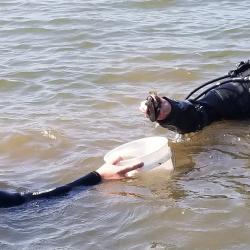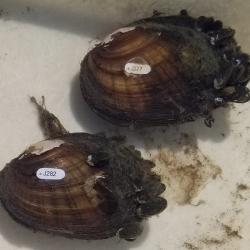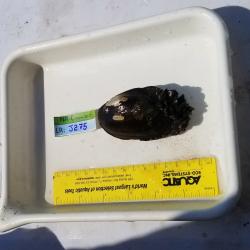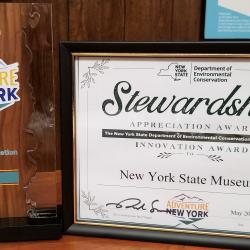Science Tuesday: Malacology Fieldwork
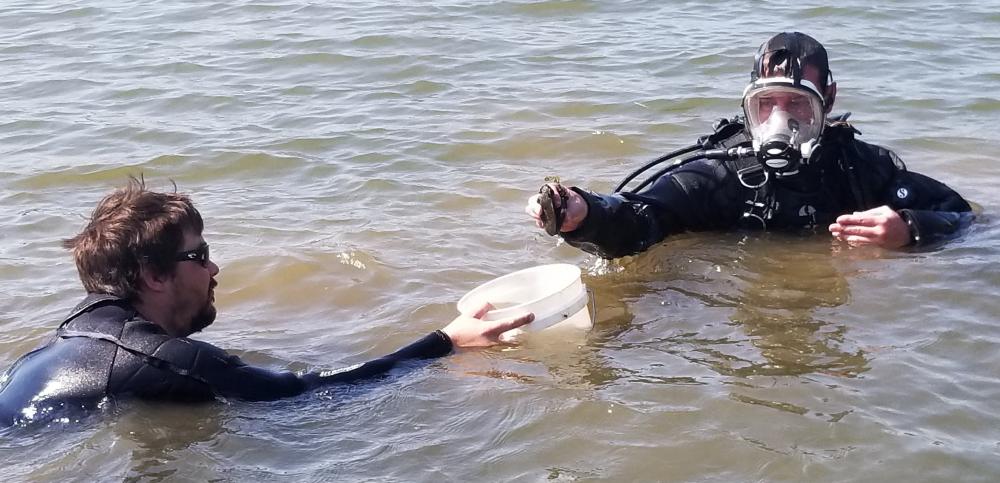
Zebra and quagga mussels can be aggressive invaders of waterbodies and, when they reach high densities, can be devastating to native mussel populations (among other impacts). Many lakes and rivers that once supported abundant and diverse communities of native mussels have seen declines after zebra mussel infestation. However, scientists have discovered that even in heavily invaded waterbodies, there can be areas where native mussels remain. We refer to these areas as native mussel refugia and they often have soft sediments that allow the native mussels to burrow deep into the sediments for a long enough period of time to suffocate and dislodge attached zebra mussels.
One native mussel refuge in New York is located in the Lower Grasse River where millions of native mussels of at least 16 species survive in the presence of zebra mussels. This section of the Grasse River is undergoing a massive cleanup of PCB (polychlorinated biphenyl) contamination which involves the removal (by dredging) and replacement of much of the river bottom with new, clean, sediment. To save native mussels from removal during dredging, SCUBA divers are collecting mussels ahead of the dredgers and moving them to safe areas. Once the sediments are replaced, the mussels will be returned to the clean areas as founder colonies.
Will the new sediments be too hard for native mussels to burrow to remove zebra mussels? NYSM scientists, working with scientists from the St. Regis Mohawk Tribe (SRMT), are conducting experiments in the Grasse River to answer this question. Native mussels were collected and tagged (bee tags glued on) and released into non-remediated and remediated areas last August (2020) prior to zebra mussels attaching. Tagged mussels were recovered by diving in the spring (June 2021) and data were collected (mussel height and length), zebra mussels were scraped off and brought back to the laboratory for further assessment, and the native mussel was released.
When data analysis is complete, the findings could assist in the design of future decontamination projects. NYSM and St. Regis Mohawk Tribe scientists were recently recognized with a 2020 Stewardship Award in Innovation (https://www.dec.ny.gov/press/122812.html) for their collaborative efforts to protect native mussels in the Grasse River.
Image 1: SCUBA diving SRMT scientists recovering tagged mussels.
Image 2: Tagged Eastern Lampmussels (Lampsilis radiata) with attached zebra mussels.
Image 3: Tools for collecting field data: caliper to measure mussel length and height, camera to document sample, ruler to assess accuracy of instruments, sample label, mussel tag, tray to contain sample during processing.
Image 4: 2020 Stewardship Award in Innovation awarded to the NYS Museum and St. Regis Mohawk Tribe in recognition for their conservation work on native mussels in the Grasse River.



